Modern Tanks and Armoured Fighting Vehicles
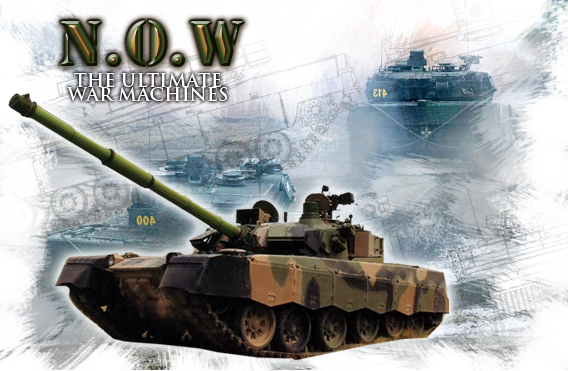 The tactics, technologies, projects, all the tanks in service today around the globe… Tanks are still there. Since the sixties, there was a worldwide consensus about the main battle tank design (MBT), in terms of speed vs armor vs weaponry. The “magic triangle” is now filled by many models, in many armies. Those whose economic conditions allow access to second-grade foreign export models are now building derivatives under licence or even their own MBT (although always with a basis in foreign components). Despite changes in modern warfare, there are no plans to get rid of tanks yet. Better still, many developed countries no “part of the club” are now launching brand new models (like the Turkish Altay), and old nations are drawing plans for a new generation MBT (like the German plan for a hypothetic Leopard III).
The tactics, technologies, projects, all the tanks in service today around the globe… Tanks are still there. Since the sixties, there was a worldwide consensus about the main battle tank design (MBT), in terms of speed vs armor vs weaponry. The “magic triangle” is now filled by many models, in many armies. Those whose economic conditions allow access to second-grade foreign export models are now building derivatives under licence or even their own MBT (although always with a basis in foreign components). Despite changes in modern warfare, there are no plans to get rid of tanks yet. Better still, many developed countries no “part of the club” are now launching brand new models (like the Turkish Altay), and old nations are drawing plans for a new generation MBT (like the German plan for a hypothetic Leopard III).
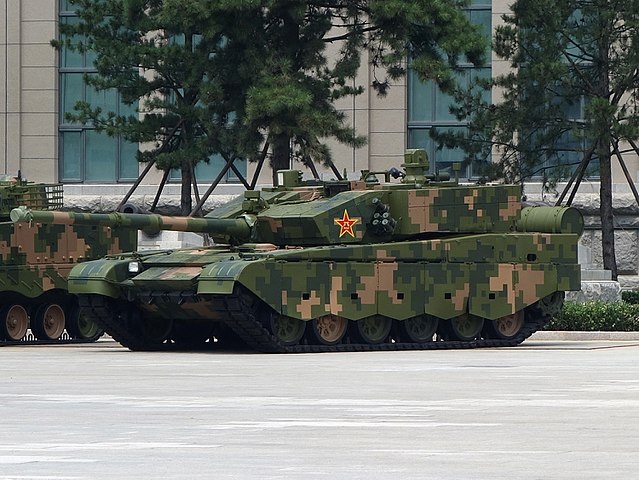
Chinese PLA ZTZ-99A MBT
A good example is China which developed Soviet-flavour tanks with western technologies. The current T99 is a perfect example of these influences. Usually nuclear powers, or suspected ones, are likely to produce their own domestic MBT model. This includes Israel with the Merkava, India with the Arjun, Pakistan with the Al-Khalid (although based on the Chinese Type 90IIM) and Iran with the Zulfiqar. The first generation (1945-1970s) was succeeded by a second generation around 1975, and followed by a third generation in the 1990s. The differences between these are considerable, even if in appearance they are similar in some ways.

1st generation
The heritage and experiences of WW2 led the definition of a “do-it-all” medium/heavy tank, later called “main battle tank” (in the 1970s) that would be first demonstrated with the Centurion. At that time, armor thickness and firepower were essential; mobility depended on powerful engines and modern suspensions, generally of the torsion bar system. Leaf springs and Christie coils were not up to the task with the usual heavyweights of that time, those of the 35+ tons class. The main efforts were put on the development of better sloped armor, new turret shapes, and main guns of the 75 mm – 120 mm range, 90-100 mm being the norm for MBTs at that time.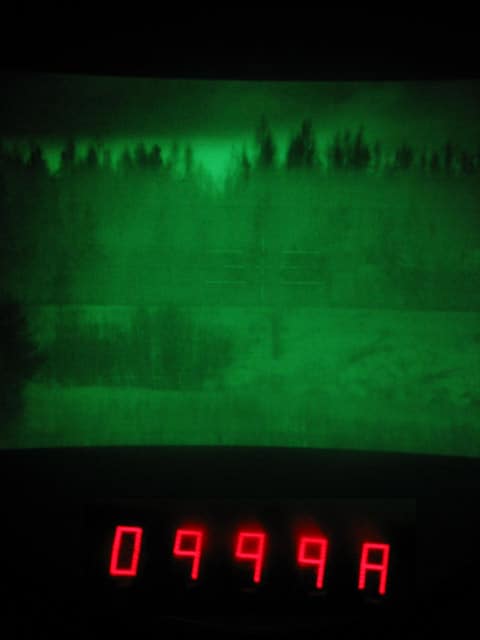
Leopard 2A4 EMES night thermal sight with 12x magnification
Optics made some progress, but engagement range was still between 500 and 3000 m in direct fire, and the tank needed to stop to fire accurately at a range greater than 200 m. Rolled homogeneous armour imposed itself (Rolled homogeneous armor, or RHA, is a type of armor made of a single steel composition, as opposed to layered or cemented armor) but armour thickness was between 13 and 120-150 mm depending on the model, which could be an armored car, a light tank, a medium or a heavy tank. The MBT was usually considered as fitting between the medium and heavy type. The heavy class disappeared first in the 1950s, its poor mobility condemned by the good balance of the new mediums, and the light tank type survived until the 1960s, largely replaced nowadays by IFVs.
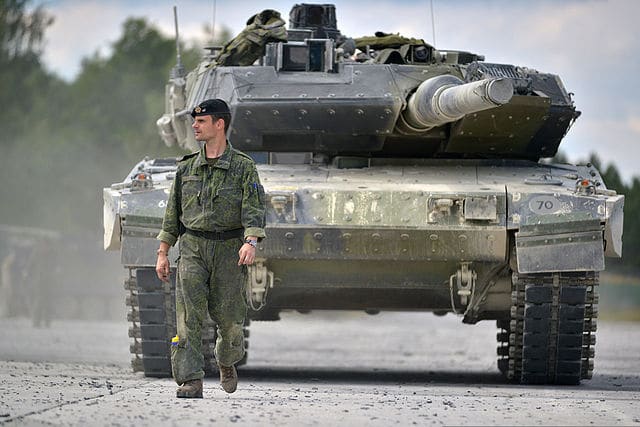
Danish Leopard 2A5DK in training
An unequal duel between ammunition and protection
In the 1960s, there were already concerns about the ability of RHA armour against the new ammunition. Classic AP rounds with hard steel or tungsten-core (later refined as the armour-piercing, composite rigid (APCR) or HVAP) were indeed already eclipsed by the nasty HEAT rounds, using metal superplasticity characteristics similar to shaped-charge weapons. These were available in the early 1940s and reigned supreme in parallel with the armour-piercing discarding sabot, or APDS, pioneered by Brandt in 1940 and refined in the UK until 1944.These were supplied to the QF 6-pdr anti-tank gun and the famous 17-pdr, the best allied tank cannon by then. The idea was to launch a heavy tungsten carbide penetrator using the “slingshot effect” of its ammo container. That was basically the same idea as the ancient warriors attaching straps on javelins which provided additional speed though a lever effect. This led to the rise of the APFDSDS or armour-piercing, fin-stabilized, discarding-sabot using the same principle but with an arrow-shaped kinetic energy penetrator made of a super-hard component. The destruction of the tank was the result of pure kinetic energy by the means of a relatively small object (A modern 120 mm round only launches a dart half its size or less), and the race in the 1970-1980s was to find the hardest possible material, which was attained by depleted uranium (DU).
Tapered-bore guns with APCNR rounds used a relatively similar technique to increase the speed of the projectile with this time a “soft” projectile squeezed down when reaching the barrel muzzle, but the very short life of the barrel condemned the idea which never survived WW2.
The threat of hand-held shaped-charge projectiles, from the WW2 Piat, Panzerfaust and Bazooka to their modern counterpart, mass-produced RPGs, made imperative the protection of usually-sacrificed protection areas, like the sides, top and rear of a tank. Indeed, infantry were increasingly good at approaching from the flanks or rear of a tank to strike. Specialization of MBTs in tank-to-tank engagements made it imperative to work on this Achilles heel that existed since WW1- extreme vulnerability of tanks in an urban environment. It was not only the threat of infantry that ordained the concept of spaced armour in 1943, which is still in use today, but in the 1960s the US and other nations tried various concepts of armed cupola/turrets tailored to protect the operator, who was very vulnerable in close-quarter combat, being half-way out of the turret. This led naturally to the remote-controlled light weapons of the 1980s. Israel refined these systems during the long, protracted urban warfare of the 1980s in Lebanon.
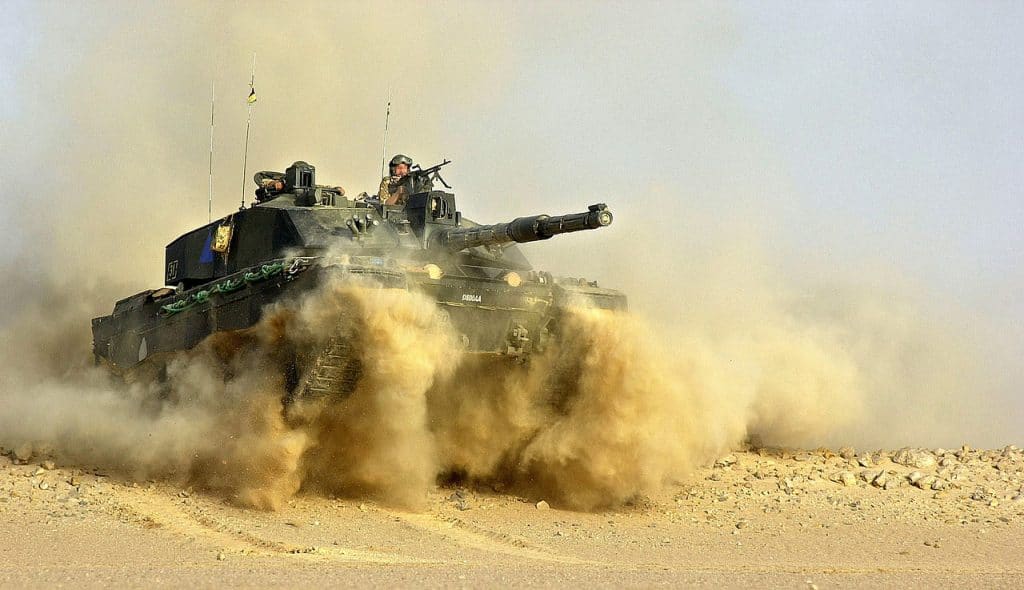
The Europeans by the 1960s were acutely aware of this gap between the new type of ammunition and the classic RHA. The Europa-Panzer project tried to answer this by putting the emphasis more on mobility and firepower. With a better gun and better optics a tank can in effect out-range and defeat another tank before being inside its range, and could also avoid being targeted efficiently and hit by a weapon of superior speed and agility. Both improvements, in theory, rendered protection almost useless, and in the 1960s, both the Leopard and AMX-30 that resulted from these studies were woefully under-armoured, but that would change in the late 1970s.
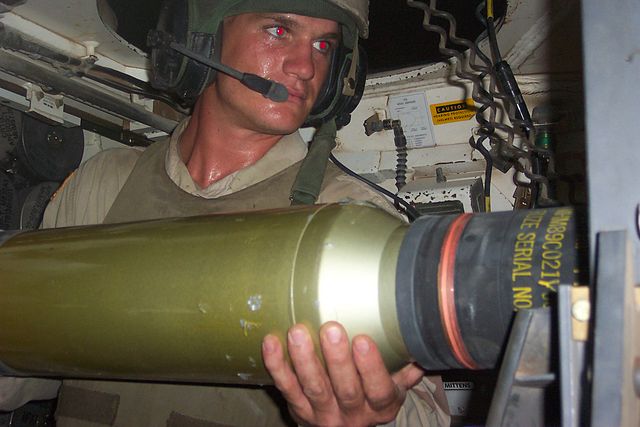
By then, electronics, combined with better optics, rendered possible firing on the move, thanks to the invention of the gun stabilization system, connected to a ballistic computer and a laser rangefinder. These three innovations combined to make all the firepower more efficient on the 2nd generation main battle tanks, which were followed by the necessary return of the emphasis on protection and its refinements, through composites and ERA. (See later).
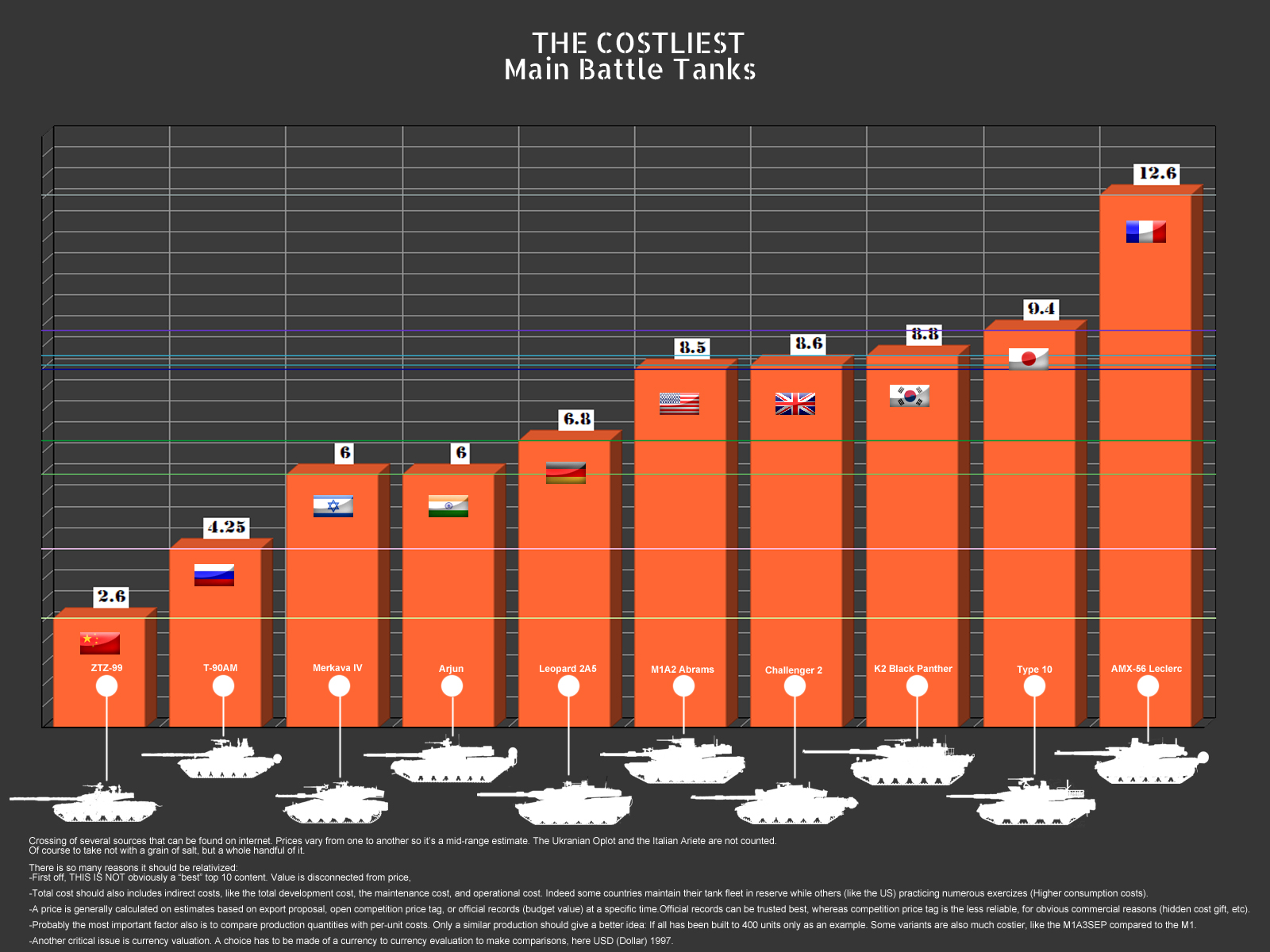
3rd Generation
Most experts agree that this new generation was mostly the result of better electronics and sensory equipment and a general advancement typical of the digital era. However, other innovations are more down-to-earth. Indeed, the basics only changed in degree compared to the 2nd generation. The main armament for a MBT is now universally set to 120 mm (with or without an autoloader), which allows a great deal of versatility and efficiency with existing rounds like the APFSDS. Improvements with rounds usually consisted of finding better round compositions using computer simulations, but the greatest change is in the accuracy provided to the gun itself.Computer-assisted research led to devising better materials and compositions through less expensive computer-generated trials and simulations, helping in turn to refine the composition of today’s composite armour. For better cost-efficiency and greater upgrade pace, modular armour was also introduced, to integrate these new configurations, which also included better composite materials like carbon fiber. The composite layers could indeed help defeat any round configuration, from HEAT to Sabot, using just one versatile sandwich recipe.
Mobility did not change much in appearance, still relying on 6-7 relatively small roadwheels suspended by torsion bars. But the introduction of hydro-pneumatic suspension (pioneered already in the 1960s for the very atypical Swedish S-tank) seemed to be more usual, and perhaps the next logical step. When combined with a digital computer with GPS and big data management, it can automatically set the right suspension hardness to fit the terrain, or even prevent driving errors and/or provide driving correction on the move.
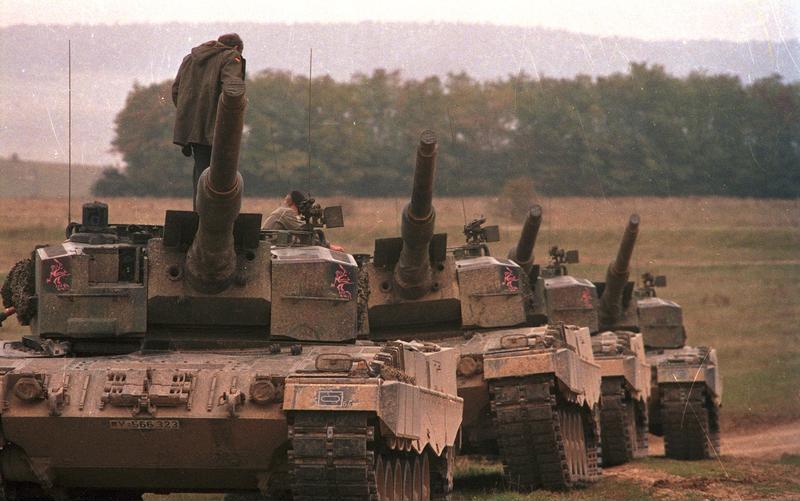
Staff members of the Federal Press Office are observing the autumn maneuver "Fränkischer Schild" of the Bundeswehr - with the participation of numerous soldiers from NATO member states as well as a French large organization - in the area of Würzburg 1986 - Bundesarchiv
Towards a 4th Gen ?
Currently MBTs of the 3rd and actual generation are from the 1980s, nearly 40 years old. There are talks about what exactly is or should be a 4th generation MBT. Many argues the Japanese Type 10 is a 4th gen. MBT, but does not provide more elements to fuel their case other than “featuring the most advanced features”. The Altay is very much and advanced local copy of the Leopard 2A6/7, but still not seen as a “4th”, and the Chinese projected Chinese PLA CN-M whether it is a hoax or a real thing, needs to be covered much in detail to again paste this label.What about the T-14 Armata ? Being the latest tank with the Altay to be unveiled and pressed into service, the Armata arguably features some characteristics which should be included in future tanks, therefore possible 4th gen MBTs: Its remotelly operated turret that provide its crew with an unprecedented level of protection while at the same time keeping the low weight and profile of previous Russian MBTs. To counter the Armata and possible Chinese type 05, Rheinmetall has recently developed a 130 mm gun (already tried 140 mm guns when testing the Leopard 2) which will receive probably a new MBT, unless it is tailored to fit on the current Leopard 2 chassis and modified turret. https://www.nextbigfuture.com/2016/06/next-generation-german-and-french-main.html
Engines although benefiting from intensive computer-assisted research will tend to be cheaper in the future, both for testing and maintenance, through computer optimization and 3D printed mechanical parts. Reliability and durability are both of paramount importance, due to the extreme military requirements. Turbodiesels are now the norm, after a long evolution that favoured autonomy and endurance over brute raw power, which was also ultimately attained.
Another feat of engineering was to marry the advantages of the diesel with a turbine. Several modern tanks, like the Abrams, the T-80 and the Leclerc indeed favoured this formula (already pioneered also by the S-tank) that can provide an enormous speed boost, albeit through high fuel consumption. The diesel is used for cruising and generally feeding on-board electrical systems while the turbine acts as an auxiliary energy source when the main engine was shut down. Computer gearbox and consumption management now help to save fuel and better manage the engine’s durability. Let’s not forget that the usual engineering rules applied to civilian products, which impose a short life cycle for the sake of sales marketing, are normally irrelevant in the military. An MBT today is so expensive to design and so easy to upgrade that its life expectancy more than doubled, to reach 50 years plus. Best examples of this are the Soviet T-72 and American Abrams, that are still first-line and still relevant after several upgrades..
But the real game-changers are probably electronics and digital equipment. These are not external changes but they brought battlefield efficiency to new heights, thanks to several systems. For the gunnery, improvements consist of a better laser range finder, with a better and faster, fully automated data management system that allows the “hunter-killer” capability. This began with detection through satellite and/or drone-provided intelligence and long-range infrared recognition, (much superior to the human eye) to laying the gun with the proper parameters and ammunition according to the target’s own moves and the battlefield terrain. Improved gun stabilization systems and better gyroscopes allow a gun to stay on target, regardless of the tank’s own movement or the actions of the target. This data management combined with rapid-loading or assisted loading also allows engaging several targets in a short period of time. Long range accuracy would be a mix of sensory data of extreme acuity and diversity, combined with all the power of modern computation to give an extremely precise and fast gunnery solution, automatically transmitted to the gun laying system.
What the future could bring is the possibility of a fully automated tank, a ground-based version of an armed drone. Eliminating the crew would provide extra room for ammunition for example, but could also dramatically reduce the size of a tank. That would result in better mobility and relative stealth on the battlefield.
Indirect fire capabilities seem to be no longer necessary since extremely efficient SPGs are now available, firing 150 mm rounds in quick bursts, very accurately at 60 km and more thanks to rocket-assisted rounds. But a complex and costly system like a MBT must be capable of dealing with all kinds of threats, and were and are still used in practice for artillery support, although this is not their primary goal. Well-assisted by drones, satellites, friendly infantry, and geo-tactical intelligence data which could be integrated with other factors (such as weather parameters, natural environment, strategic objectives, other threats) the MBT is often managed today by a data bus and ends up on digital displays that could help such indirect fire. On maximal elevation, an HE round could fly at a maximum of 3000 to 5000 m depending on the round and weather. It’s far less than a modern SPG however, but one could imagine assisted rounds to be provided for certain missions. Standard HE anti-personal rounds that rely on blast effects could now be advantageously replaced by “mother” rounds containing a cluster of bomblets for a maximal fragmentation area.
Technical advances:
Powerplant
On the battlefield, speed is a form of active protection when speaking of traditional gunnery. Speed is also a definitive asset in any form of offensive. Very high performance is provided by supercharged diesels of about 1500 to 2500 bhp, with speeds up to 75 kph and more, and tremendous torque for impressive off-road capabilities. Turbine engines are even more powerful. This comes at a price however. These costly engines are specifically tailored for these tanks as well as their transmissions, resulting in high manufacturing and high maintenance costs. These engines are multifuel to provide more versatility, and are envisioned to provide more than 800 kms of operational range at a moderate pace on flat terrain.
Weaponry
The main armament is now well-established around a very long-barrel, very high-muzzle-velocity 120 mm gun or more. This 50 caliber is now standard, and a “tank killer”, thanks to a great variety of costly but very efficient AP rounds, even small missiles or laser-guided shells, and all-terrain dual-axis aiming control, fast-fire control systems, advanced dual-stabilizers, and powerful computerized threat-analysis and response software. These all contribute, not only to a kill range of six to eight kilometers, but also to prioritize and treat with an extremely accurate and fast rate of fire every possible threat, from nearby infantry to helicopters and light armour. As these tanks are very costly, primary missions are spearheading an offensive, the protection of armoured transports and tank hunting, but also close support missions, or even reconnaissance in high density (urban) areas.
The rate of fire can be improved with an autoloader which can replace the third crewman in the turret. This permits the development cost-effective three-man tanks, the possibility of smaller or better protected turrets, increased ammunition storage, augmented rate of fire, and improved safety. Many current MBTs use an autoloader. Ammunition is generally divided into three main categories. The traditional HE (high explosive) which is chiefly an anti-personnel round, could still disable light armour and fortified positions due to its concussion. MBTs are built in limited number due to their tremendous cost, ranging from 1.5 to 2 million dollars for second hand (Soviet) tanks to 17-18 million for modern MBTs like the French Leclerc.
Protection
Armour is still the main passive protection of a modern MBT, but the applications are varied and always layered, and exact composition of the main armour is one of the well-guarded secrets of any military establishment. This includes modern composites like carbon fibres, titanium and ultra-high-resistance special steel plates and other composite alloys, as well as ceramics, like the Chobham armour, (developed into the Dorchester armour for the Challenger II) which proved its usefulness in the Gulf Wars. The order of the sandwiched layers and the relative thickness of the various sheets are all highly classified. Traditional armour was made of reinforced RHA to make plates up to 330 mm thick on the 1960-1970 tanks. But all these are passive protections.
One of the best active defences was developed by Israel to deal with the ever-present RPG threat. RPGs, with their shaped-charge projectiles are low-cost and were effective in Lebanon in the 1980s. Israel responded with the ERA (Explosive Reactive Armour) now widespread among developed countries as a relatively cheap, modular, and effective way to protect a tank. ERA was also designed to deal with HEAT and kinetic energy penetrators. ERA is made of relatively small, composite, layered bricks, which are bolted to prepared supports. ERA needs to cover all the sensitive areas to be effective. One of the biggest problems is related to the immediate concussion effect of an external explosion to the infantry operating close by. Another kind of active protection is made of decoy projectors, chaff, and active countermeasures similar to those on board military aircraft.
Tanks in the digital era
As well as mobility, firepower, and protection, information is paramount on a battlefield. Nowadays it’s the new frontier of tactical awareness and communication which focuses the attention of military planners. Victory is a combined strategy which employs a great deal of intelligence, gathered from space or from drones of all kinds, and permanent communication between all the components of a combined-arms strategy. (More to come)
Powerplant
On the battlefield, speed is a form of active protection when speaking of traditional gunnery. Speed is also a definitive asset in any form of offensive. Very high performance is provided by supercharged diesels of about 1500 to 2500 bhp, with speeds up to 75 kph and more, and tremendous torque for impressive off-road capabilities. Turbine engines are even more powerful. This comes at a price however. These costly engines are specifically tailored for these tanks as well as their transmissions, resulting in high manufacturing and high maintenance costs. These engines are multifuel to provide more versatility, and are envisioned to provide more than 800 kms of operational range at a moderate pace on flat terrain.Weaponry
The main armament is now well-established around a very long-barrel, very high-muzzle-velocity 120 mm gun or more. This 50 caliber is now standard, and a “tank killer”, thanks to a great variety of costly but very efficient AP rounds, even small missiles or laser-guided shells, and all-terrain dual-axis aiming control, fast-fire control systems, advanced dual-stabilizers, and powerful computerized threat-analysis and response software. These all contribute, not only to a kill range of six to eight kilometers, but also to prioritize and treat with an extremely accurate and fast rate of fire every possible threat, from nearby infantry to helicopters and light armour. As these tanks are very costly, primary missions are spearheading an offensive, the protection of armoured transports and tank hunting, but also close support missions, or even reconnaissance in high density (urban) areas.The rate of fire can be improved with an autoloader which can replace the third crewman in the turret. This permits the development cost-effective three-man tanks, the possibility of smaller or better protected turrets, increased ammunition storage, augmented rate of fire, and improved safety. Many current MBTs use an autoloader. Ammunition is generally divided into three main categories. The traditional HE (high explosive) which is chiefly an anti-personnel round, could still disable light armour and fortified positions due to its concussion. MBTs are built in limited number due to their tremendous cost, ranging from 1.5 to 2 million dollars for second hand (Soviet) tanks to 17-18 million for modern MBTs like the French Leclerc.
Protection
Armour is still the main passive protection of a modern MBT, but the applications are varied and always layered, and exact composition of the main armour is one of the well-guarded secrets of any military establishment. This includes modern composites like carbon fibres, titanium and ultra-high-resistance special steel plates and other composite alloys, as well as ceramics, like the Chobham armour, (developed into the Dorchester armour for the Challenger II) which proved its usefulness in the Gulf Wars. The order of the sandwiched layers and the relative thickness of the various sheets are all highly classified. Traditional armour was made of reinforced RHA to make plates up to 330 mm thick on the 1960-1970 tanks. But all these are passive protections.One of the best active defences was developed by Israel to deal with the ever-present RPG threat. RPGs, with their shaped-charge projectiles are low-cost and were effective in Lebanon in the 1980s. Israel responded with the ERA (Explosive Reactive Armour) now widespread among developed countries as a relatively cheap, modular, and effective way to protect a tank. ERA was also designed to deal with HEAT and kinetic energy penetrators. ERA is made of relatively small, composite, layered bricks, which are bolted to prepared supports. ERA needs to cover all the sensitive areas to be effective. One of the biggest problems is related to the immediate concussion effect of an external explosion to the infantry operating close by. Another kind of active protection is made of decoy projectors, chaff, and active countermeasures similar to those on board military aircraft.
Tanks in the digital era
As well as mobility, firepower, and protection, information is paramount on a battlefield. Nowadays it’s the new frontier of tactical awareness and communication which focuses the attention of military planners. Victory is a combined strategy which employs a great deal of intelligence, gathered from space or from drones of all kinds, and permanent communication between all the components of a combined-arms strategy. (More to come)Particular cases
M95 Degman (1995)

This little known Croatian main battle tank was developed by the Đuro Đaković company. It was to be an improvement of the Yugoslav-era M84, also built by the same company before the war erupted. The M84 and the M-90 Vihor tank which followed were derived from the T-72M. The new tank was much improved and had a 1200 hp engine, RACAL com set, CBRN suite and digital battlefield management and diplays, SZ 2000 CBRN NBC system, Slovenian Fotona sights and optics, LIRD-4B FCS and laser irradiation warning system, and new Diehl tracks, whereas the protection systems were developed with Elbit Systems. There was in particular a Rafael-Samson Remote Controlled Weapon Station (RWS) coupled with a grenade launcher. Upgrades include the fitting of a Swiss RUAG Defence 120mm compact gun, ECM and LAHAT ATGMs. Two prototypes were built, now operational, but no production followed, although their conception helped the transitional upgrade to the M84D Croatian main battle tank.
Eastern MBTs: Asad Babil & Type 96


One of the most heavily armed middle east nations in 1990 was Iraq, armed and support by the West against Iran, a country that threatened regional oil supplies in the Iran-Iraq war. The “Lion of babylon” was not properly “built” from scratch, it was locally assembled from T-72 parts mixed with locally-made armoured plates and comprehensively downgraded. It ended as probably the worst MBT ever built, and fared poorly in both gulf wars. on the other hand, the Type 96 was the product of a ling lineage of Chinese tanks since the Type 59 of the 1960s, a copy of the T-54A. The Type 96 has been mass-produced since the mid-1990s and in its 2000s A/G version, is comparable to Western 3rd generation MBTs. This model replaced all other tanks currently in service from previous generations, namely the Type 59, 69, 79, 80, 88 and possibly even 85. Such prolific lineage only masks the state of uncertainty and trials and errors of a relatively seclusive and isolated nation, at least until the 1990s.
Modern European SPGs

In two releases, we revealed two models that made the pride of the German, Italian, Dutch and Greek armies (Panzerhaubitze 2000) and the British AS-90 Braveheart. Two good examples of the finest examples of a genre that was first defined in 1918 with the Gun Carrier Mark 2. Progress were registered in the science of ballistics and rounds performances, electronics, communication, and GPS positioning and both can fire in semi-automatic mode in short bursts and at ranges which were once reserved only to battleships: 40 up to 60 kilometers, thus providing a deadly accurate, even efficient against moving targets, fast-firing artillery support anywhere in a 80-120 km radius.
Zulfiqar MBT (1992)

This modern Iranian tank was first designed by Brigadier General Mir-Younes Masoumzadeh of the self-sufficiency of the armed forces. The name is from the legendary sword of Ali, the first Shiite Imam. Puzzling for world experts as it looks like much as the M1 Abrams, the Zulfiqar is made of bits of technology from the Soviet T-72 and American M48 and M60 tanks. But despite its generous dimensions, the first Zulfiqar 1 was rated for 36 tonnes with a 780 hp diesel engine. The Zulfiqar 2 and 3 (in service today) were much-developed versions, armed with the 125 mm smoothbore gun and weighting 52 tons, for 1000 hp engine.
Ramses II Main Battle Tank

Ramses II MBT - The strangest russo-american hybrid ever…
Looking only superficially to the T-54, the Egyptian national tank is a good illustration of a country swapping from soviet-built to US-built tanks and make a modernization campaign which end to the “best of both worlds”. Another idea of the “détente” ? Anyway, the large Egyptian T-54 fleet (first acquired in the early 1960s) was indeed modernized by Teledyne -A Chrysler defence company- to integrate as much as possible elements of the M60 main battle tank. Due to the fact this is also the MBT of choice of Egypt (supplemented by more modern Abrams MBTs), the commonality of parts was a requirement for an ordnance which had to deal with quite an amazing array of foreign models… And eventually led to this strange hybrid, low, rugged and dependable, although somewhat lacking modern protection, but ready to recycle old hulls far into the XXIth century.
Ariete Main Battle Tank

Designed in the late 1980s and unveiled in the 1990s the “ram”…
Italy’s first true 100% main battle tank was conceived to replace the ageing feet of M60A1s with a more modern propositon, a 3rd generation MBT. Named after the famous Italian ww2 armoured division, the Ariete C1 was born from a consortium between Iveco-Fiat and OTO Melara. The last was well-experienced in building modern MBTs, having geared up the local production of German Leopard Is under licence. It came as no surprise that the Ariete took most of the drivetrain, tracks, roadwheels from the Leopard. But the turret itself borrowed aspects from the British Challenger and US M1 Abrams. A relatively light and very fast MBT, well-armed, although lacking passive protection, the Ariete is recognised as a formidable tank today.
K1 Main Battle Tank and Type 88 K1

The K1 and K1A1 Type 88 were the first South Korean designed and produced main battle tanks. They were conceived by Hyundai Precision in the 1980s in order to replace the ageing US-built M47/M48s still in service. The K1 were esentually based on the General Dynamics M1 Abrams but with many significant differences and tailorisation for the South Korean needs. Foreign designs from USA were considered and both Chrysler Defense and General Dynamics plans were accepted, but with a domestic production in 1984. One of the major differences were the use of a German MTU MB Ka-501 (Leopard 2) turbodiesel. The tank also have a composite armor similar to Chobham. After the K1 in 1987, Hundai developed the K1A1 in 2001, and K1E2 in 2013. Around 1500 of these first class MBTs are in service today, not counting the specialized variants AVLB and ARV. Western experts think they are way superior to the North Korean latest variants of the Chongma Ho and Popkung Ho. They gave birth to the K2 Black Panther, one of the costliest and most advanced MBT in the world today.